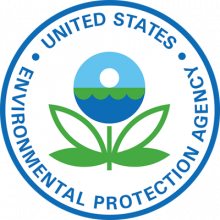The U.S. Environmental Protection Agency has awarded Clarkson University an approximately $6-million five-year grant to continue its partnership with SUNY Fredonia and SUNY Oswego to conduct the Great Lakes Fish Monitoring and Surveillance Program (GLFMSP). The EPA has previously awarded the partnership team $14.75 million, since 2006, to monitor for contaminants in the Great Lakes.

The funding is part of the Great Lakes Restoration Initiative (GLRI), which celebrated its 10th anniversary in December and supports the project to monitor legacy and emerging contaminants in top predator fish in each of the Great Lakes.
“Global commerce, recreation enthusiasts and municipalities within the entire Great Lakes ecosystem rely upon the extraordinary science and innovative solutions from this research team addressing contaminant trends in fish and ensuring healthy water supplies,” said Clarkson Provost Robyn Hannigan. “Clarkson and its collaborators for the EPA’s Great Lakes National Program are committed to applying their expertise to the environmental and resilient economic solutions that make a difference for the public good.”
Principal investigators at Clarkson are Thomas M. Holsen, Jean S. Newell Distinguished Professor in Engineering of Civil & Environmental Engineering and co-director of the Center for Air and Aquatic Resources Engineering & Science (CAARES); Sujan Fernando, CAARES analytical laboratory director and research assistant professor; and Bayard D. Clarkson Professor Emeritus Philip K. Hopke (now at University of Rochester Medical Center). Associate Professor of Chemistry & Biomolecular Science Costel Darie is a funded collaborator.
James Pagano, director of the Environmental Research Center in the Department of Chemistry at SUNY Oswego; Professor Michael Milligan in the Department of Chemistry & Biochemistry at SUNY Fredonia; and Bernard S. Crimmins, principal of AEACS LLC in New Kensington, Pa., and courtesy research associate professor at Clarkson, are also principal investigators in the study.
“This group of experts is a key reason why we’ve been able to continue doing this important work for more than 13 years,” said Holsen.
The new funding will continue analysis for contaminants to assess temporal trends in bioaccumulative organic compounds and mercury in open waters of the Great Lakes, using fish as biomonitors.
“During the next five years, we will enhance our state-of-the-art capability to identify and quantify pollutants in fish at levels previously impossible to achieve,” said Holsen. “We will assess temporal changes in contaminant transfer through lake food webs; expand the list of target chemicals; explore contaminant induced proteomic fingerprint changes in lake trout; and augment our collaborations with state and federal programs.”
Current and emerging contaminants include substances like flame retardants, pharmaceuticals, personal care products, as well as per- and polyfluoroalkyl substances (PFAS), a group of man-made chemicals that includes PFOA, PFOS, GenX, and other chemicals. These chemicals are very persistent in the environment and human body, and can lead to adverse health effects.
Holsen says that the research enhancements made possible by the EPA grant will provide a much clearer picture of the health of the Great Lakes ecosystem and will continue the team’s status as a world-wide leader in documenting how human activity is affecting aquatic ecosystems.
GLRI was launched in 2010 with the goal of protecting and restoring the chemical, physical and biological integrity of the Great Lakes basin. Over the past 10 years, the ambitious work of EPA and the hundreds of GLRI partners has resulted in tremendous progress, including funding more than 5,400 projects totaling over $2.7 billion to improve water quality, protect and restore habitat, control invasive species and manage other challenges in the Great Lakes ecosystem.
